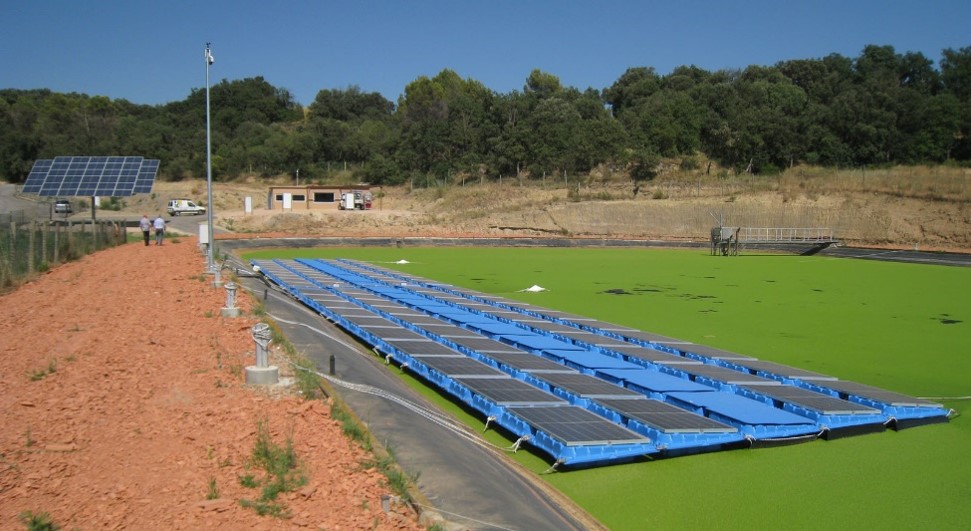From pv magazine Spain
Spanish energy company Intergia is helping a group of pig farmers in Spain add floating PV to reduce the ammonia emissions of a slurry pond of a pig farm in Tauste, in the Spanish northern region of Aragón.
In the proposed plant configuration, the floating array is expected to cover the liquid surface of the pond completely, with air spaces left between the floats being filled with waterproof hexagonal plastic elements that are reportedly able to reduce ammonia emissions by up to 40%.
These elements, when left on the liquid surface of the pond, are placed together in the form of a honeycomb and function as a floating cover, which prevents the escape of gasses.
The PV system will rely on a floating solution called HDPE provided by Spanish specialist Isigenere. These floaters work as a support for the photovoltaic panels, in addition to other floating elements for perimeter corridors of the system, with the aim of facilitating maintenance.
“The project is scheduled for completion in October 2023, and during this time we are going to study the ammonia levels, as well as the degradation of the materials and the operation of the panels,” a spokesperson from Intergia told pv magazine. “The pilot installed in the pond will remain there until the end of its useful life. In normal facilities it is usually about 25 years, now we have to see if it degrades sooner with the ammonia-rich environment.”
The 20.7 kW prototype will consist of 46 photovoltaic modules. The surface covered by the floating system is 142.7 m2, which represents a percentage of 23.8% of the pool. The system plus the hexagons will cover 34.7% of the raft and will supply approximately 38% of the farm's annual electricity consumption.
In intensive livestock areas, excess nutrients such as nitrates are retained in slurry, which is moved into collection pods to avoid pollutants impacting the local soils and water table. Spanish legislation sets limits on the application of manure per hectare – and to the water, if it filters into the aquifers and streams. Through the accumulation of slurry in ponds, large amounts of ammonia are also emitted into the atmosphere. It has been observed via satellite that there is a high concentration of this gas in areas with intensive pig farming, such as Aragon and Catalonia.
This content is protected by copyright and may not be reused. If you want to cooperate with us and would like to reuse some of our content, please contact: editors@pv-magazine.com.



By submitting this form you agree to pv magazine using your data for the purposes of publishing your comment.
Your personal data will only be disclosed or otherwise transmitted to third parties for the purposes of spam filtering or if this is necessary for technical maintenance of the website. Any other transfer to third parties will not take place unless this is justified on the basis of applicable data protection regulations or if pv magazine is legally obliged to do so.
You may revoke this consent at any time with effect for the future, in which case your personal data will be deleted immediately. Otherwise, your data will be deleted if pv magazine has processed your request or the purpose of data storage is fulfilled.
Further information on data privacy can be found in our Data Protection Policy.